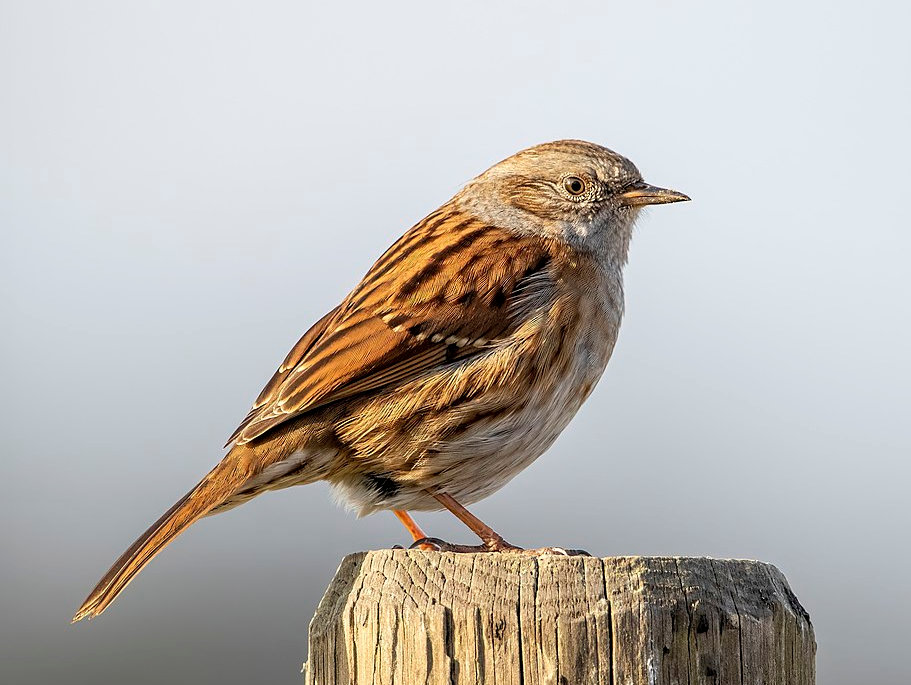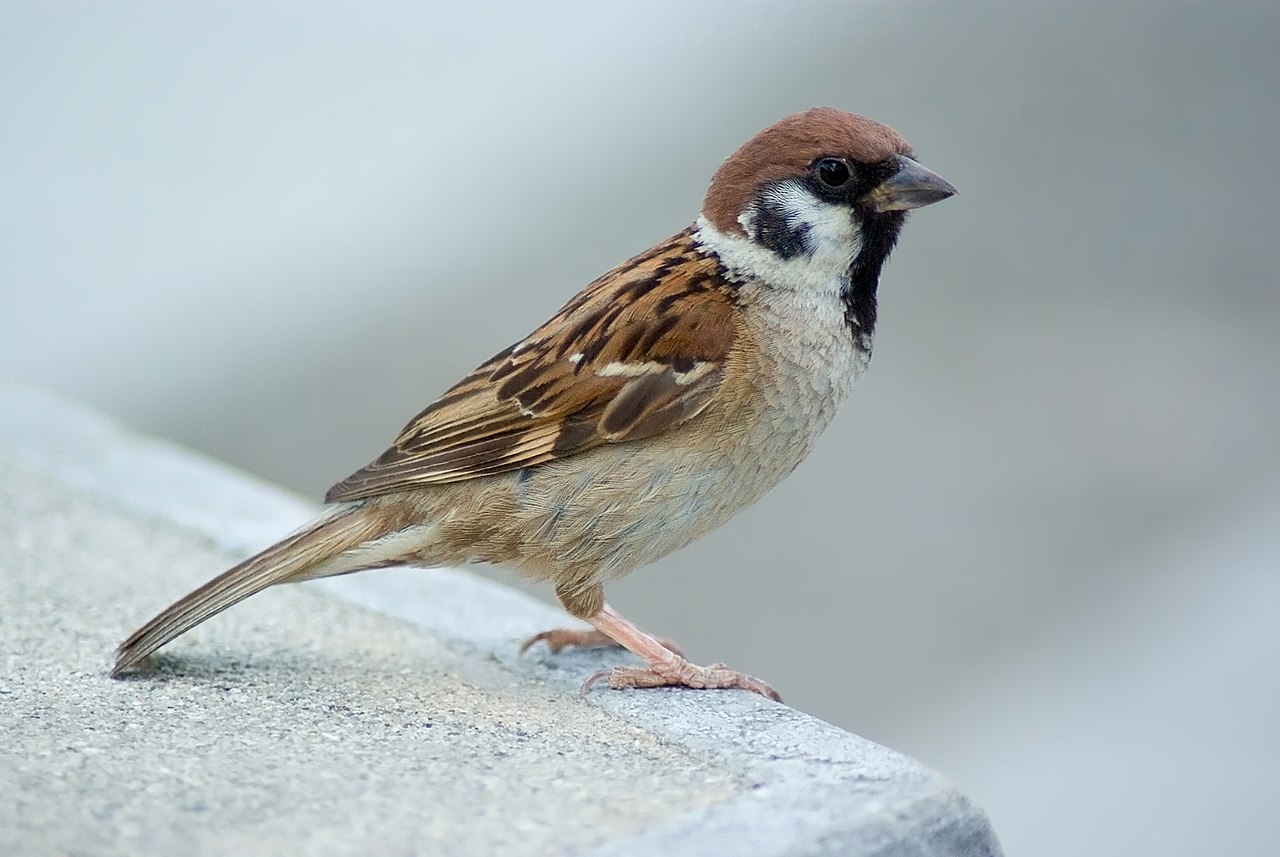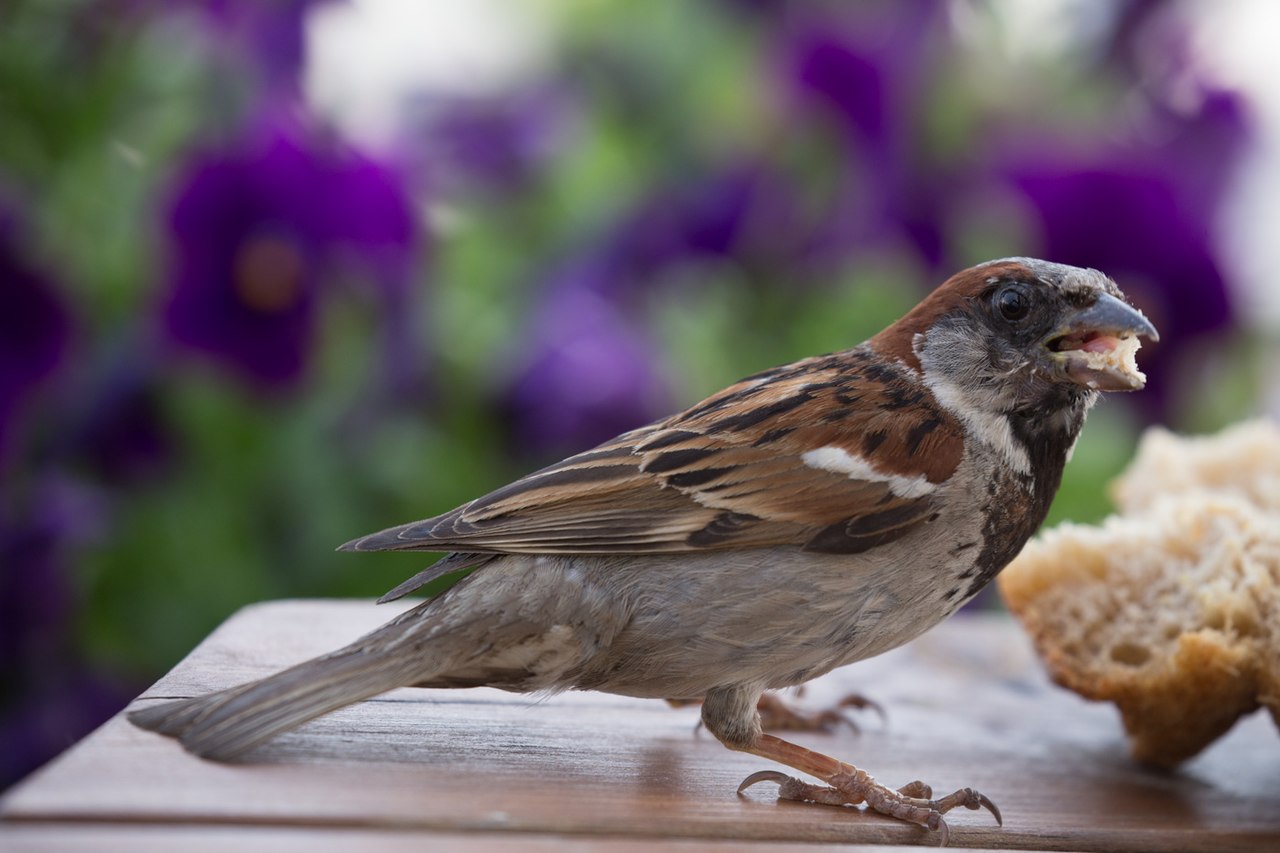Garden Wildlife
Garden Wildlife


"Sparrows"
This page is called "sparrows" because it introduces three species often called sparrows, but only two are true sparrows in the genus Passer in the family Passeridae. The house and tree sparrows are so ubiquitous that they gave their name to the whole massive group of perching birds the Passeriforms. The hedge sparrow, now nearly always called a dunnock isn't a true sparrow at all, being an "accentor" in the family Prunellidae. However, the three species are pretty similar in appearance and easily muddled.
Click on the images below to go to the pages for each species.
House sparrow male
Both sexes have true sparrow's seed-eating beak. Males have a grey/white cheeks and grey forehead and crown, with brown nape. They have a black bib below the bill
House sparrow female
Less brown than male with a streaky crown, forehead and nape and a creamy stripe behind the eye
Tree sparrow (sexes alike)
Quite like the male house sparrow, but chestnut crown to the head and a black spot below and behind the eye
Dunnock (sexes alike)
Most similar to the female house sparrow, but insect-eating beak is much thinner and more pointed. No big white wing bar
14 cm
14 cm
14 cm
14 cm
"Sparrows"
This page is called "sparrows" because it introduces three species often called sparrows, but only two are true sparrows in the genus Passer in the family Passeridae. The house and tree sparrows are so ubiquitous that they gave their name to the whole massive group of perching birds the Passeriforms. The hedge sparrow, now nearly always called a dunnock isn't a true sparrow at all, being an "accentor" in the family Prunellidae. However, the three species are pretty similar in appearance and easily muddled.
Click on the images below to go to the pages for each species.
14 cm
14 cm
14 cm
Tree sparrow (sexes alike)
Quite like the male house sparrow, but chestnut crown to the head and a black spot below and behind the eye
Dunnock (sexes alike)
Most similar to the female house sparrow, but insect-eating beak is much thinner and more pointed. No big white wing bar
14 cm


.jpg)

























